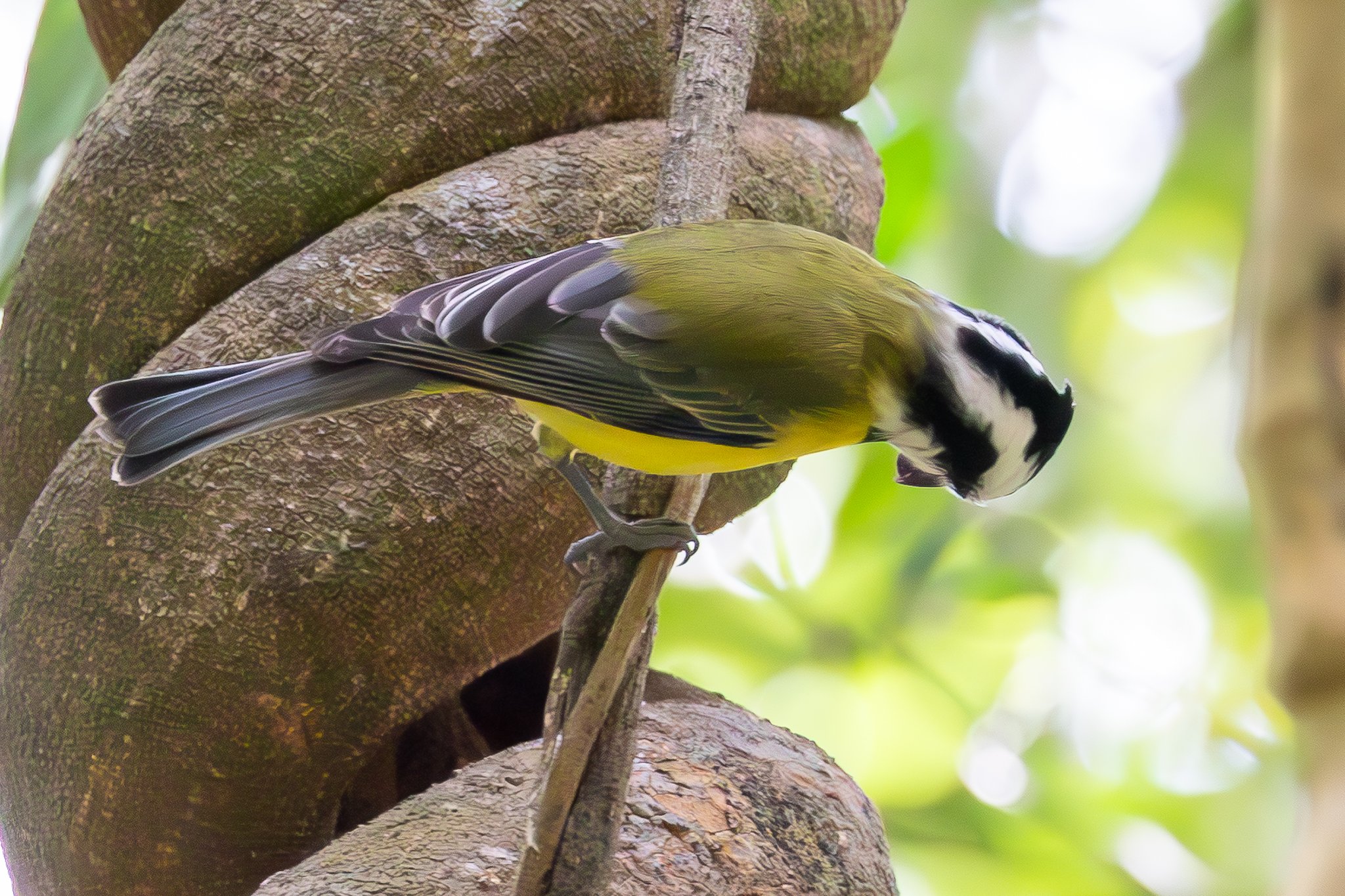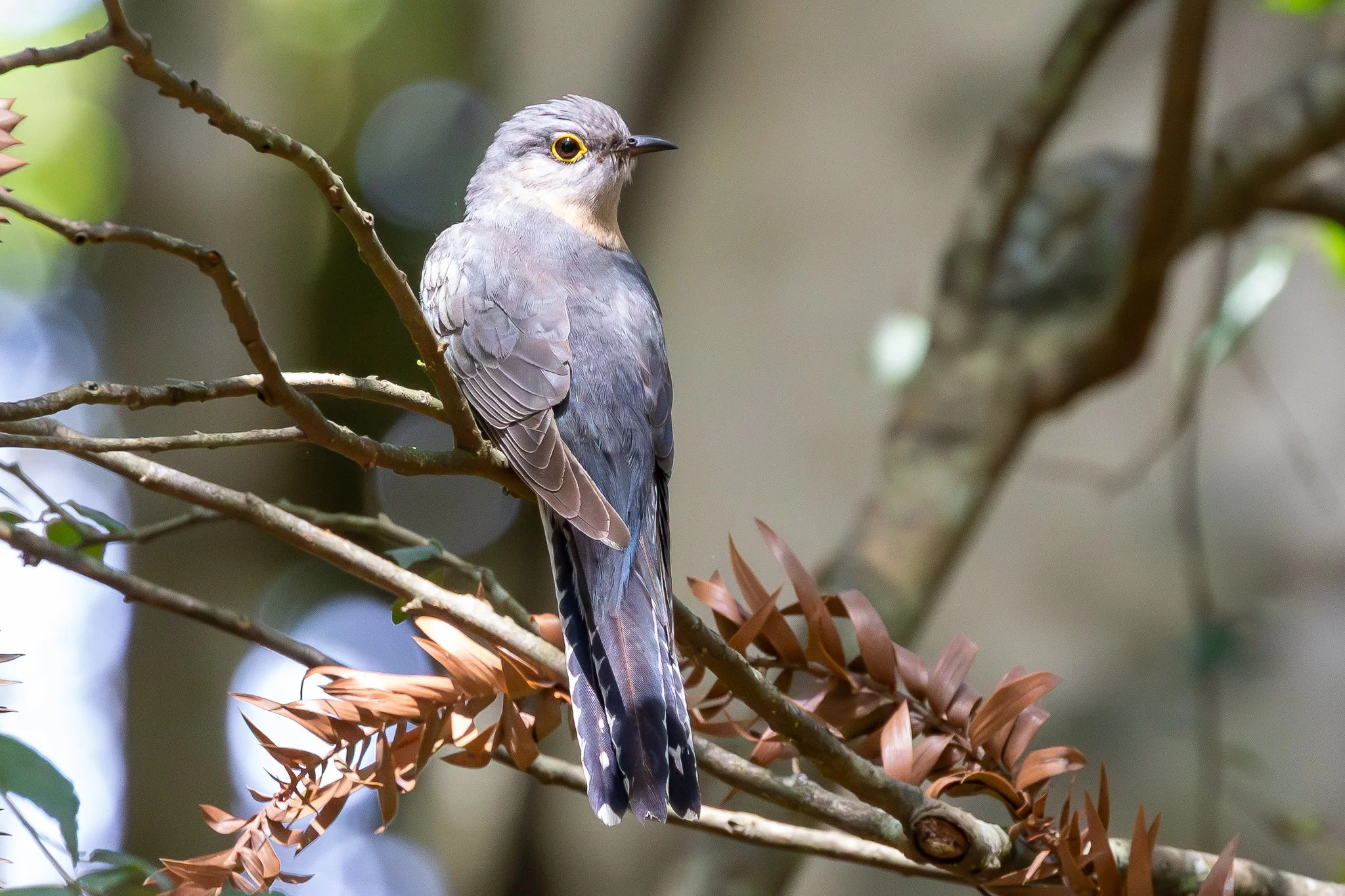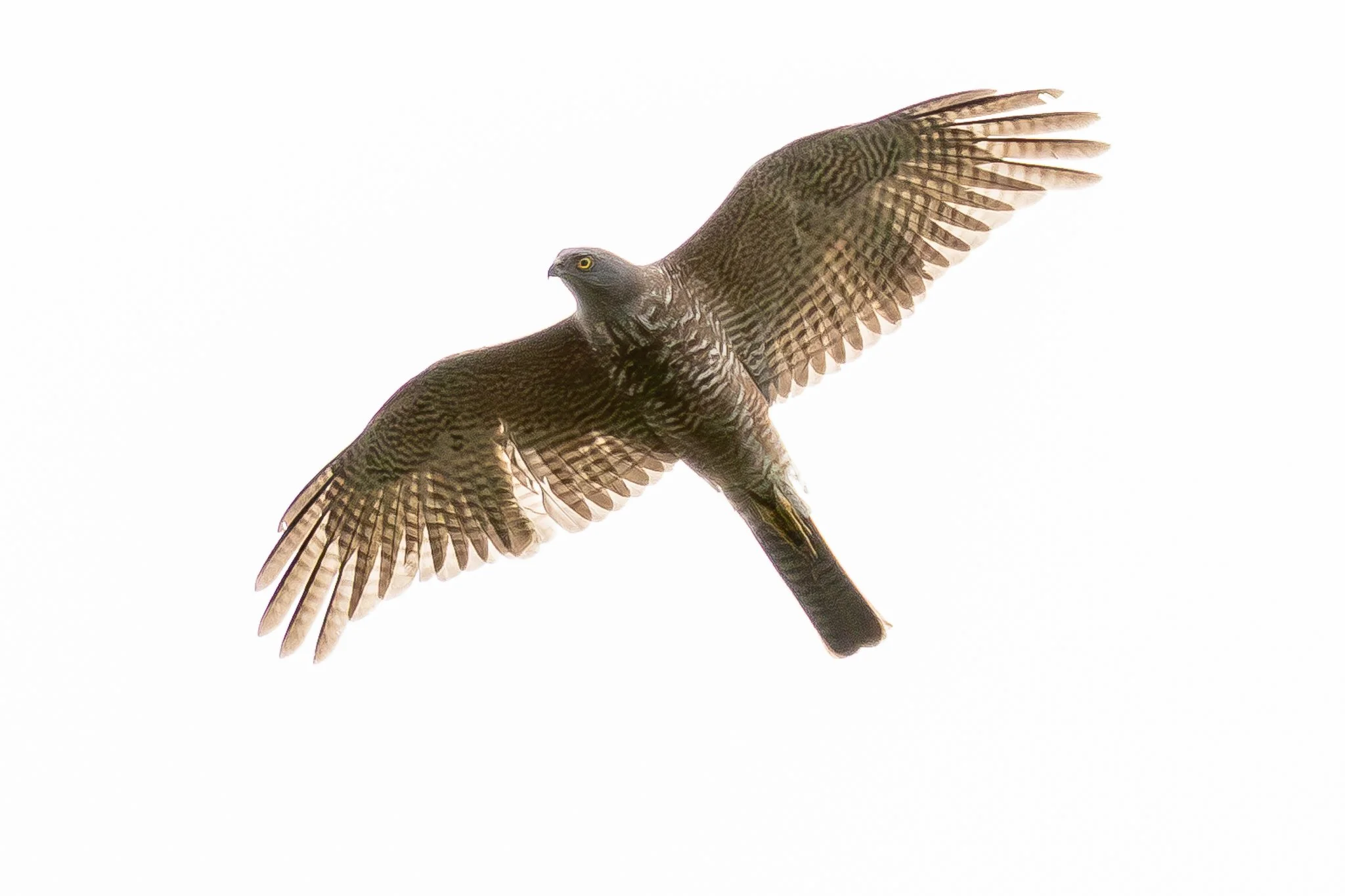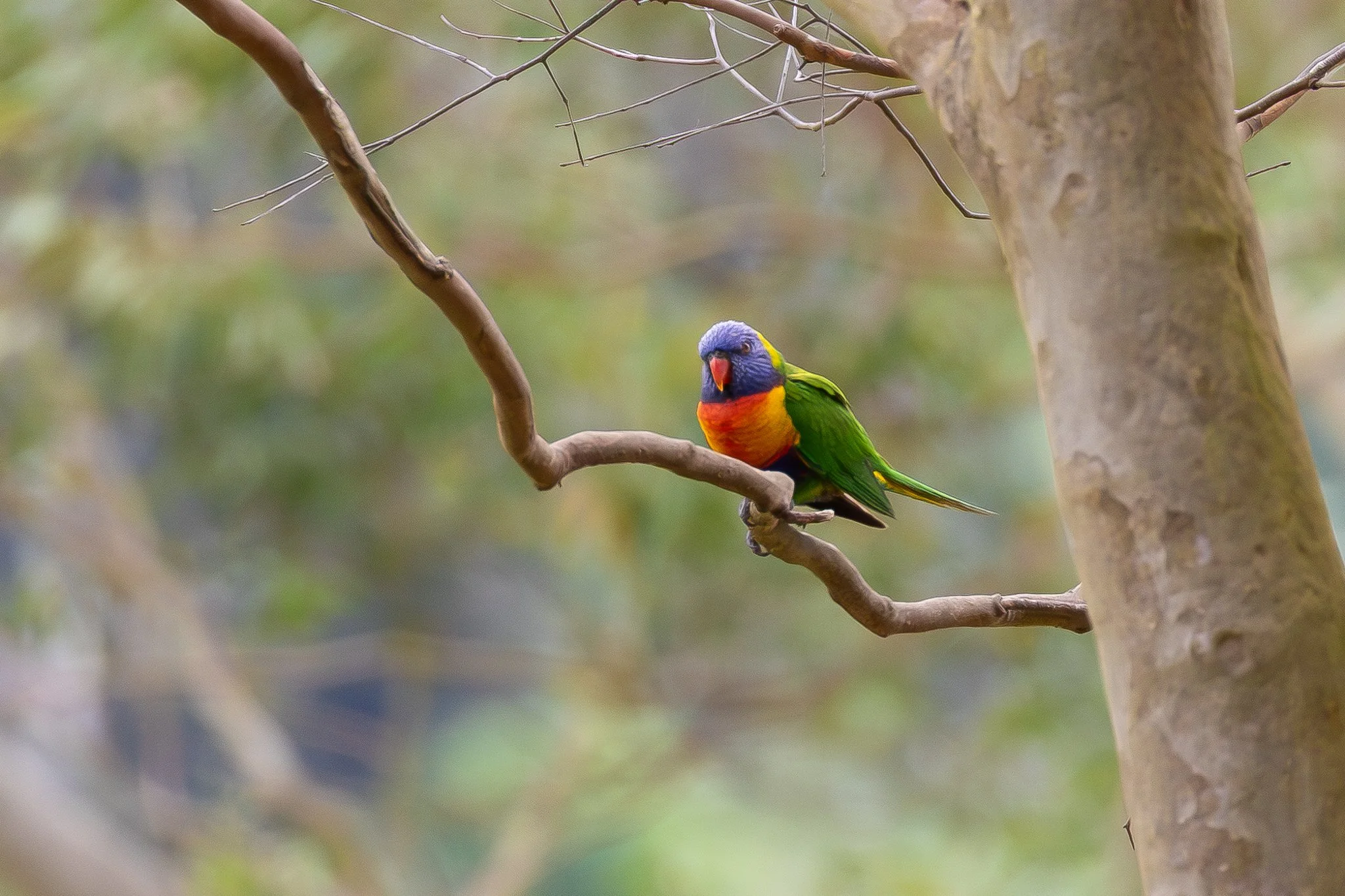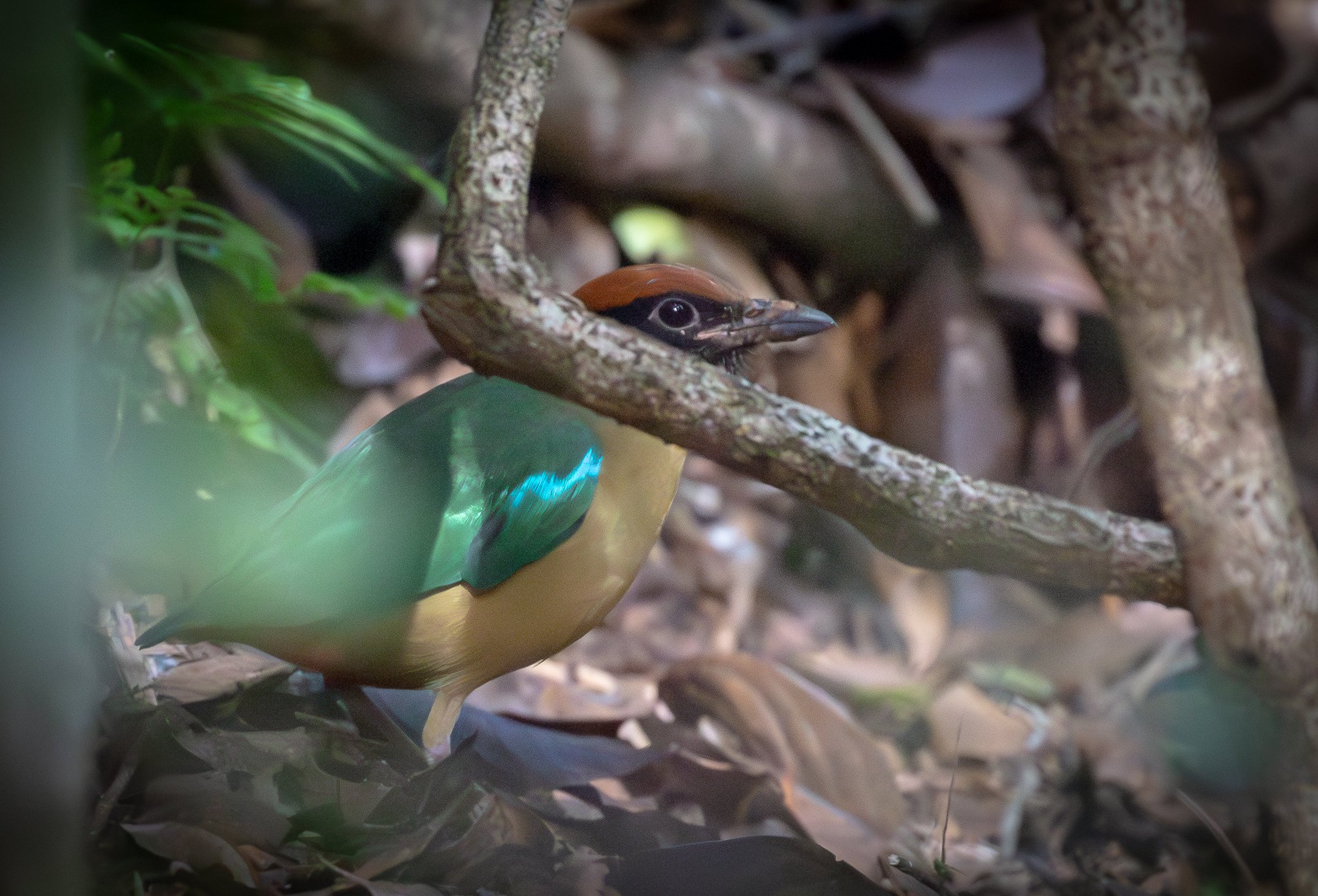The Bunya Mountains emerge from the plains of the Western Downs, some 200 km north west of Brisbane, Queensland. Sub-tropical rainforests top the mountain range, dominated by Bunya Pine, a tall and spectacular evergreen tree of the conifer family. We stopped at the Russell Park Picnic area and a short walk around the picnic area revealed 16 species of bird including a Noisy Pitta.
A Crested Shrike-tit, exploring a rather large curled vine in the car park at Russell Park Picnic Area in the Bunya Mountain rainforest.
One of many Eastern Whipbirds calling and feeding in the car park.
While listening to a Shining Bronze-Cuckoo calling, this Fan-tailed Cuckoo suddenly appeared.
A Brown Cuckoo-Dove feeding of the ground, again in the car park!
